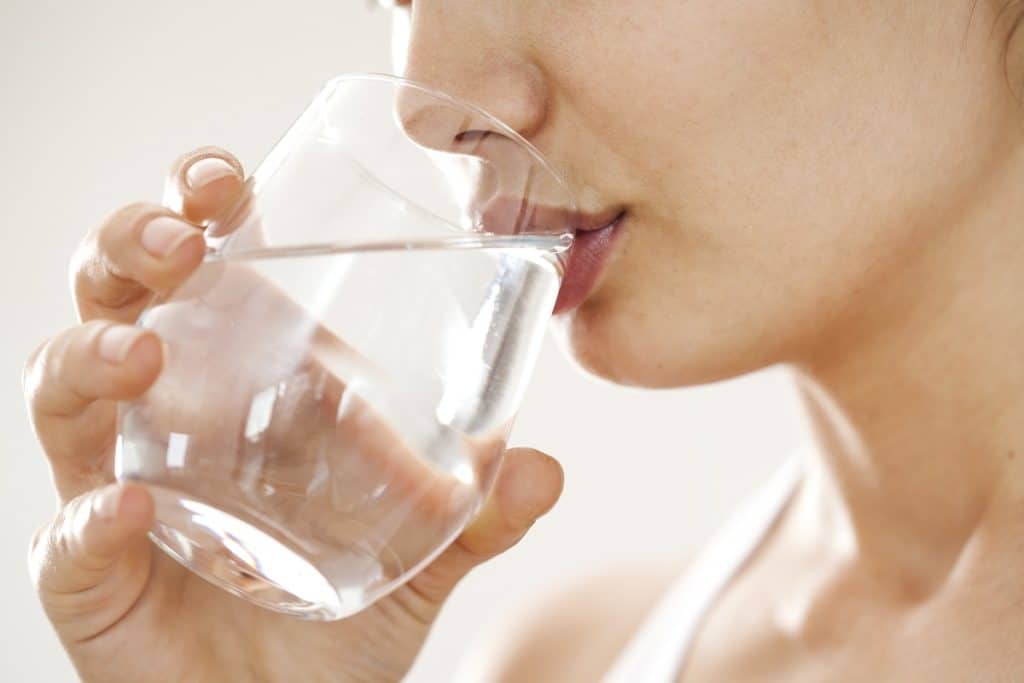Water is an important element. Your body requires a steady supply of H20 to function properly, since almost all of your cells need it to survive. Plus, 70% of your body is made of water, so replenishing your fluids consistently is a necessary part of living a healthy lifestyle. Water helps deliver nutrients via the bloodstream throughout the body and will help flush toxins that have built up out of your system.
Most people do not drink the recommended amount of water each day. Half an ounce to an ounce of water per pound of body weight sounds like a lot, so most will not commit to consuming this amount of water daily. But if you want your body to reach its maximum potential in terms of wellness, then sufficient hydration is needed.
Water Can Contain Harmful Substances
It is important to note that not all drinking water is created equally. Since water is transported through underground piping, it can often be affected by exterior contaminants that make it harmful to drink. Here are a few harmful contaminants to watch out for in your tap water that could be damaging your health.
PFAS
PFAS, or per- and polyfluoroalkyl substances, are being talked about more and more each day on the topic of drinking water hazards. The EPA has issued warnings to watch out for these chemicals in your water supply. PFAS are commonly used in consumer products, often serving as a stain or leak prevention method. They can be found in anything from non-stick cookware to stain-resistant upholstery to food storage materials. Due to their widespread use, PFAS are now being discovered in the environment and could be leaching into your water supply through the ground. These contaminants could cause thyroid diseases or high cholesterol if you are exposed long-term.
Lead
If you live in an old house, there is a possibility that lead is getting into your drinking water. Lead was a common material used in the design of pipes for many years, and although it is no longer used in manufacturing plumbing systems, older buildings may use this material. Lead is particularly dangerous for children to consume, and you are probably aware of the crackdown on lead based paints in the last few decades. If you suspect that your pipes may be made out of lead, you may want to test your water or speak with a contractor about replacing them to ensure health for everyone in your home.
Vinyl Chloride
Vinyl chloride is a manufactured substance that often results from the making of plastic. Though it is most often an issue when people breathe it in, it can also move through the ground and contaminate a water supply, making it dangerous for those who drink, cook with, or bathe in affected water. It can lead to many immune diseases and damage to the liver, kidneys, or nerves. Residents of Camp Lejeune discovered late in the 20th century that much of their water was contaminated from 1953-1987, leading to significant health issues decades later for some. Vinyl chloride was one of the contaminants that was found in the water supply for this area. If you live near any manufacturing plants, your water supply could be at risk from contaminants like this one.
What Can You Do to Protect Yourself?
Ensuring that your water supply is safe to drink from is very important for your health and the health of everyone in your household. These contaminants could be doing long-term damage that leads to bad diagnoses and in the worst cases, death. The question is how can you protect yourself from these health concerns.
Regularly Test Your Water
Though public water systems are regulated, it never hurts to test your home’s water since there are some factors that could affect your water but not your neighbor’s. If you live on a private well system, it is even more important to test the water yourself since the government will not do it for you. It isn’t that difficult to get your hands on a home test or take a sample that you can send in for inspection by an organization that deals with water quality.
Do Visual Checks
When you pour yourself a glass of water, take note of any differences that might show up. Is there more sediment than usual? Does the water appear cloudy? Is the color slightly off? All of these signs may be indicating that a foreign contaminant has entered the water supply, in which case you should get it tested to make sure it is still safe to use.
Do Not Take Your Water Supply for Granted
It could be tempting to accept the quality of your water as is. But you never know what long-term damage could be happening to your body if there are certain contaminants in the water that you are not dealing with. Have your water tested to ensure that it is safe to drink and bathe in to protect your health and the health of others in your home.
 The Care Up
The Care Up




